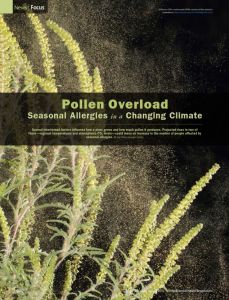Join getAbstract to access the summary!

Join getAbstract to access the summary!
Charles W. Schmidt
Pollen Overload
Seasonal Allergies in a Changing Climate
EHP, 2016
What's inside?
Rising temperatures and CO2 levels are bad news for hay fever and asthma sufferers and the health care system that treats them.
Recommendation
Award-winning American science writer Charles W. Schmidt gives a clear explanation of how climate change is making allergenic plants grow larger and produce pollen in greater quantities, while simultaneously extending their growth season. He shares data on emerging seasonal and regional changes from around the world. Although more study is necessary, Schmidt provides evidence that the effect on public health will be profound, especially in cities and in the north of the Northern Hemisphere. getAbstract recommends this article to allergy and asthma sufferers and anyone with an interest in public health.
Summary
About the Author
Charles W. Schmidt is an award-winning American science writer who writes for Scientific American, Science, various Nature publications, and many other magazines, research journals, and websites.

















Comment on this summary